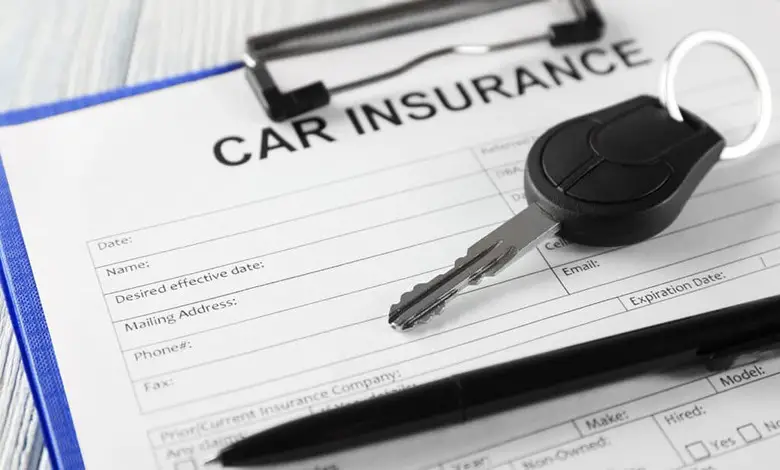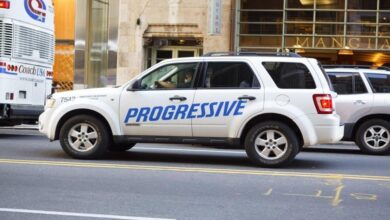What is SR-22 Insurance, Who needs it, and How does it Work?

Introduction
SR-22 insurance is not a type of car insurance but rather a certificate of financial responsibility that some drivers are required to file with their state. It’s essentially a document that verifies you have the minimum liability insurance coverage required by law, typically after a driving violation or reinstatement of a suspended license. Think of it as a bridge between you, the state, and your insurance company, ensuring everyone is on the same page about your coverage.
Why Do You Need the SR-22?
Legal Requirements
An SR-22 is a legal document mandated by various state laws in the United States. It serves as proof of financial responsibility for drivers who have committed specific driving offenses or face certain situations. Each state has its regulations regarding SR-22s, outlining the circumstances under which they’re required and the filing procedures.
Situations that lead to SR-22 requirement
Here are some situations that can lead to an SR-22 requirement:
- DUI/DWI Convictions: Driving under the influence (DUI) or driving while intoxicated (DWI) is a serious offense that can result in an SR-22 requirement in all states.
- Multiple Traffic Violations: Having multiple traffic violations within a short period, such as speeding tickets, reckless driving charges, or at-fault accidents, can also lead to an SR-22 requirement.
- Driving Without Insurance: Driving without car insurance is illegal in all states, and if you are caught, you will likely be required to file an SR-22 to get your license reinstated.
- Lapsed Insurance Policy: If your car insurance policy lapses and you are involved in an accident, you may be required to file an SR-22 to get your license reinstated.
- Unpaid Child Support (in some states): In some states, failing to pay child support can lead to an SR-22 requirement.
- Leaving the Scene of an Accident: If you are involved in an accident and leave the scene without exchanging information with the other driver, you may be required to file an SR-22.
- Driving with a Suspended or Revoked License: Driving with a suspended or revoked license is illegal, and if you are caught, you will likely be required to file an SR-22 to get your license reinstated.
- Refusal to Take a Breathalyzer Test: In some states, refusing to take a breathalyzer test after being pulled over for suspicion of DUI can lead to an SR-22 requirement.
How SR-22 Affects Car Insurance Rates
Increased Premiums
An SR-22 itself doesn’t directly increase your car insurance premium. However, the underlying reason for needing an SR-22, which is usually a driving violation or lapse in insurance, can significantly impact your insurance rates.
Here’s how it works:
- Increased risk: Insurance companies view drivers with SR-22s as higher risk due to their past driving record. This means they’re statistically more likely to file claims, leading to higher premiums for the insurer.
- State surcharges: Some states add additional surcharges to your premium if you have an SR-22. These surcharges can vary depending on the violation and can be quite significant.
- Policy changes: Depending on the severity of the violation and your insurance company’s policies, you might be moved to a higher risk tier or offered limited coverage options, both of which can lead to higher premiums.
The amount of increase can vary widely depending on several factors, including:
- The type of violation: DUIs and reckless driving typically lead to the highest premium increases.
- Your driving history: A clean driving record before the violation can help mitigate the increase.
- Your state’s regulations: Some states have stricter regulations for drivers with SR-22s, leading to higher surcharges.
- Your insurance company’s policies: Different companies have different risk tolerance and pricing models.
Here’s a rough estimate of how much your premium might increase with an SR-22:
- DUI: 50-70% increase
- Reckless driving: 25-50% increase
- Multiple moving violations: 15–25% increase
It’s important to note that these are just averages, and your actual increase could be higher or lower.
Duration of the SR-22 Requirement
The duration of the SR-22 requirement varies depending on your state and the reason you need it. Here’s a general breakdown:
The most common reasons for needing an SR-22 are:
- DUI/DWI convictions: Typically 3-5 years
- Multiple moving violations: Usually 2-3 years
- Driving without insurance: Often 1-3 years
- Lapsed insurance policy: Typically 1-2 years
- Unpaid child support (in some states): Varies by state, but usually until the debt is paid off
Other factors that can affect the duration of the SR-22 requirement are:
- The severity of the violation
- Your driving history
- The state’s specific laws
Here are some resources where you can find more information about the SR-22 requirement in your state:
- The National Association of Insurance Commissioners (NAIC): https://content.naic.org/
- The Insurance Information Institute (III): https://www.iii.org/index.html
- Your state’s Department of Motor Vehicles (DMV) website
Finding the Right Insurance Provider for SR-22
Specialized Insurance Companies
Here are some specialized insurance companies for the SR-22:
- The General: This company is known for its affordable rates for high-risk drivers, including those with SR-22 requirements. They offer a variety of coverage options and have a good reputation for customer service.
- Progressive: Progressive is another large insurer that offers SR-22 filing services. They have a variety of discounts available, and they make it easy to file your SR-22 online or through their app.
- Liberty Mutual: Liberty Mutual offers SR-22 insurance in most states. They have a variety of coverage options and offer discounts for things like good driving records and bundling your insurance policies.
- GEICO: GEICO offers SR-22 insurance in most states. They have a variety of coverage options and offer discounts for things like good driving records and military service.
- State Farm: State Farm is another large insurer that offers SR-22 filing services. They have a variety of coverage options and a good reputation for customer service.
These are just a few of the many insurance companies that offer SR-22 filing services.
Factors to Consider when Choosing a Provider
Choosing the right provider for your SR-22 insurance can be a daunting task, especially when you’re already navigating the complexities of driving violations and license reinstatement. Here are some crucial factors to consider to ensure you make an informed and cost-effective decision:
- Company Reputation and Expertise:
- Look for a reputable and established insurance company with a proven track record of handling SR-22 filings. Check online reviews and ratings, and inquire about their experience with high-risk drivers.
- Cost and Fees:
- Compare SR-22 filing fees and insurance premiums from different providers. Remember, the cheapest option isn’t always the best. Consider the total cost over the filing period, including any cancellation fees or surcharges.
- Coverage Options and Limits:
- Make sure the insurance company offers the minimum liability coverage required by your state. You may also want to consider additional coverage options, such as collision and comprehensive insurance, for peace of mind.
- Filing and Reporting Services:
- Choose a provider that seamlessly handles the SR-22 filing process with the state. Look for features like automatic renewals and timely reporting to avoid any lapses in coverage.
- Customer Service and Support:
- Having responsive and helpful customer service is crucial, especially when dealing with SR-22s. Choose a provider with readily available representatives who can answer your questions and address any concerns.
Bonus Tip:
- Check for discounts or special offers for SR-22 insurance. Some providers offer discounts for completing defensive driving courses or bundling your SR-22 with other insurance policies.
By carefully considering these factors, you can choose an SR-22 insurance provider that meets your needs and budget while helping you get back on the road safely and confidently.
Remember, an SR-22 is a temporary requirement. Once the filing period is over, you may be eligible for lower rates again, assuming you maintain a clean driving record.
Steps to Obtain SR-22
Obtaining an SR-22 can seem like a daunting process, but it’s quite straightforward once you know the steps involved. Here’s a breakdown of what you need to do:
- Understand Why You Need an SR-22:
The first step is to understand why you need an SR-22. Common reasons include:
- DUI/DWI convictions: Driving under the influence or driving while intoxicated is typically the most common reason for needing an SR-22.
- Multiple traffic violations: A certain number of moving violations within a specific timeframe can trigger an SR-22 requirement.
- Driving without insurance: Lapsing on your car insurance can result in a suspended license and the SR-22 requirement to get it reinstated.
- Unpaid child support (in some states): Failure to pay child support may lead to license suspension and an SR-22 requirement in some jurisdictions.
- Determine the Filing Period:
The length of time you need to maintain an SR-22 filing varies by state and the reason for needing it. It’s typically 3-5 years but can be longer for certain offenses.
- Contact Your Insurance Company:
Once you know why you need an SR-22 and for how long, your next step is to contact your car insurance company. They’ll be able to guide you through the filing process and answer any questions you have.
- Pay the Filing Fee:
There will be a filing fee associated with your SR-22, typically ranging from $25 to $100. Your insurance company will let you know the exact amount.
- Provide Required Information:
Your insurance company will need some basic information from you to file the SR-22, such as your driver’s license number, vehicle identification number (VIN), and the state where you need the filing to be sent.
- Choose the Filing Method:
Most insurance companies offer electronic filing of SR-22s, which is the quickest and most efficient way to get it submitted. However, some states may still require paper filings.
- Monitor the Filing:
Once your insurance company submits the SR-22, it’s important to monitor its status with the state Department of Motor Vehicles (DMV). You can usually check the status online or by contacting the DMV directly.
- Maintain Insurance Coverage:
It’s crucial to maintain your car insurance coverage throughout the SR-22 filing period. Any lapse in coverage could result in the SR-22 being canceled and your license being suspended again.
- Update Your Insurance Company:
If you move to a new state or change insurance companies during the SR-22 filing period, you need to inform your current insurance company so they can update the filing accordingly.
- Celebrate When It’s Over!
Once the SR-22 filing period is over, you can finally breathe a sigh of relief. Remember, maintaining a clean driving record from this point forward will help you keep your car insurance rates down in the future.
Common Misconceptions About SR-22
Despite being a crucial document for drivers with certain offenses, SR-22s are shrouded in quite a few misconceptions. Let’s clear the air on some of the most common ones:
- Myth: An SR-22 is a type of car insurance.
Fact: An SR-22 itself is not insurance but rather a certificate of financial responsibility. It verifies to the state that you meet the minimum liability insurance requirements, typically mandated after a driving violation or license reinstatement. Think of it as a bridge between you, the state, and your insurance company, ensuring everyone’s on the same page about your coverage.
- Myth: You only need an SR-22 until you get your license back.
Fact: The duration of an SR-22 requirement varies by state and the reason for needing it. It usually lasts for 3-5 years, but can be longer for certain offenses, like DUIs. So, even if your license is reinstated sooner, you’ll likely need to maintain the SR-22 filing for the entire mandated period.
- Myth: An SR-22 covers any vehicle you drive.
Fact: An SR-22 is tied to the person, not the vehicle. While it ensures you have the minimum liability coverage for your car, it doesn’t automatically extend to any other vehicle you operate. If you borrow a friend’s car, for instance, their insurance coverage would apply, not yours.
- Myth: Having an SR-22 means you can’t get affordable car insurance.
Fact: While SR-22s can lead to higher premiums due to the underlying driving violation, it’s not always a deal-breaker. Shopping around for quotes from different insurance companies can help you find affordable options. Additionally, maintaining a clean driving record after obtaining an SR-22 can gradually bring your rates down.
- Myth: You don’t need an SR-22 if you don’t own a car.
Fact: Even if you don’t own a car, you may still need an SR-22 if the state requires it due to your driving record. In such cases, you can opt for a non-owner SR-22, which fulfills the liability coverage requirement for any vehicle you might rent or borrow.
Tips for Maintaining SR-22 Compliance
Maintaining SR-22 compliance can be a bit nerve-wracking, but it doesn’t have to be! By following these simple tips, you can ensure you stay on the right side of the law and avoid any roadblocks to getting your license back in pristine condition.
- Keep Your Insurance Continuous: This is the absolute golden rule of SR-22 compliance. Any lapse in coverage, even for a day, can result in the SR-22 being canceled and your license potentially getting suspended again. Set up automatic payments or calendar reminders to make sure you never miss a deadline.
- Pay Your Premiums on Time: Late payments can also jeopardize your SR-22 compliance and lead to additional fees. Set up auto-pay or pay your premiums well in advance of the due date to avoid any hiccups.
- Be Upfront with Your Insurance Company: If you plan to move to a new state, change insurance companies, or experience any changes in your driving record (like getting a ticket), inform your insurance company immediately. They’ll be able to update the SR-22 filing accordingly to ensure continued compliance.
- Understand Your State’s Specifics: SR-22 requirements and filing procedures can vary from state to state. Familiarize yourself with the specifics of your state’s regulations to avoid any surprises. Most state DMVs have dedicated sections on their websites outlining SR-22 information.
- Track Your Filing Status: Don’t assume everything is in order just because you filed the SR-22. Regularly check with your insurance company and the state DMV to confirm its active status and avoid any potential issues.
- Stay Squeaky Clean on the Road: This should go without saying, but the best way to ensure smooth SR-22 compliance is to avoid any further driving violations. Take it as an opportunity to develop safe driving habits that will benefit you long after the SR-22 requirement is fulfilled.
- Seek Help if Needed: If you encounter any challenges or have questions about your SR-22, don’t hesitate to reach out to your insurance company or the state DMV. They’re there to assist you and ensure you navigate the process successfully.
Bonus Tip: Consider Defensive Driving Courses! Taking an approved defensive driving course can not only help you improve your driving skills but also potentially lead to lower insurance rates in the future. It’s a win-win!
SR-22 and Different Types of Coverage
Liability insurance with SR-22
Liability insurance covers your legal liability for injuries or property damage caused to others in an accident that you are at fault for. It typically has two parts:
- Bodily injury liability: This covers medical expenses, lost wages, and pain and suffering for people injured in an accident you caused.
- Property damage liability: This covers repairs or replacement of property damaged in an accident you caused.
How does SR-22 affect liability insurance?
Having an SR-22 on your record can increase your liability insurance rates. This is because insurance companies view drivers with SR-22s as higher risk due to their past driving record. The amount of the increase can vary depending on the severity of the violation and your state’s regulations.
Tips for getting affordable liability insurance with SR-22:
- Shop around for quotes from different insurance companies. Some companies specialize in high-risk drivers and may offer lower rates.
- Ask about discounts for things like completing defensive driving courses or having multiple policies with the same company.
- Maintain a clean driving record. The best way to lower your future rates is to avoid any further driving violations.
Here are some additional things to keep in mind:
- An SR-22 is a temporary requirement. Once the filing period is over, you should be eligible for lower rates again, assuming you maintain a clean driving record.
- You can get an SR-22 filed even if you don’t own a car. If you drive a borrowed car or rent a car and get into an accident, you could still be held liable for personal injury or property damage claims. You may be able to buy a non-owner SR-22 policy.
Comprehensive and Collision Coverage
Comprehensive and collision coverage, while not required for an SR-22 filing, can offer valuable protection for drivers in various situations, even under an SR-22 requirement. Here’s a breakdown of their significance:
Comprehensive Coverage:
What it covers: This coverage protects your car from non-collision damage or loss caused by events like theft, vandalism, fire, floods, falling objects, animal encounters, and weather events.
Benefit with SR-22: Even though an SR-22 only mandates minimum liability coverage, having comprehensive coverage adds peace of mind knowing your car is protected beyond accidents you cause. If your car gets stolen or damaged in a covered event, your insurance company will help get it repaired or replaced.
Consider if: You value your car and want financial protection against unexpected events beyond collisions.
Collision Coverage:
What it covers: This coverage pays for repairs to your car if it’s damaged in a collision with another vehicle or object, regardless of who is at fault.
Benefit with SR-22: Having collision coverage provides financial security after an accident, even if you’re at fault. This can be particularly helpful if the damage is significant and exceeds your liability coverage limits.
Consider if: You drive in congested areas with a higher risk of collision, have a newer or expensive car, or want to avoid potentially significant out-of-pocket repair costs.
Important to Note:
Additional Cost: Both comprehensive and collision coverage involve additional costs on top of your minimum liability insurance required for an SR-22.
Consider Your Budget: Weigh the benefits of these coverages against their cost and your tolerance for risk. If you have an older car or a tight budget, you might prioritize liability coverage and consider adding comprehensive or collision later.
State Regulations: Check with your insurance company and state DMV to understand any specific requirements or restrictions regarding additional coverages with an SR-22 filing.
Ultimately, the decision to add comprehensive and collision coverage on top of your SR-22 requirement depends on your individual needs and budget. Carefully consider your driving habits, car value, risk tolerance, and financial situation before making a choice.
How Long Does SR-22 Stay on Record?
Duration of SR-22 requirement
The duration of an SR-22 requirement varies greatly depending on several factors, including:
- Your State: Each state has its own laws and regulations regarding SR-22 requirements and filing periods. Some states have standardized durations for different offenses, while others consider individual factors within each case.
- Reason for needing an SR-22: The underlying reason for needing an SR-22 plays a big role in determining its duration. Common reasons include:
- DUI/DWI convictions: Typically require the longest filing periods, often ranging from 3-5 years, in some states even reaching 10 years.
- Multiple traffic violations: The type and number of violations can influence the duration. In Alabama, multiple moving violations within a two-year timeframe mandate a 3-year SR-22 period.
- Driving without insurance: May require an SR-22 for a shorter period, like 1-2 years, depending on the state.
- Unpaid child support (in some states): May have specific filing periods tied to resolving the child support issue.
- Judge’s Discretion: In some cases, a judge may have some discretion in setting the SR-22 filing period as part of their sentencing for certain offenses.
- Completion of Programs: Engaging in programs like defensive driving courses may potentially shorten the SR-22 requirement in some states.
Removing SR-22 from your record
The good news is, that SR-22 isn’t a permanent fixture on your record! There are ways to remove it once you’ve fulfilled the required filing period. Here’s a breakdown of the key steps:
1. Understand Your Eligibility:
First, ensure you’ve met all the requirements for the SR-22 filing period. This typically involves:
- Maintaining continuous liability insurance coverage throughout the period.
- Avoiding any further driving violations, including tickets or accidents.
- Completing any court-ordered programs or requirements associated with the SR-22 filing.
2. Initiate the Removal Process:
Once you’re eligible, reach out to your insurance company, as they’re responsible for canceling the SR-22 filing with the state. Usually, a simple phone call or online request is sufficient.
3. Confirmation and Verification:
Track the process. It might take a few weeks for the DMV to update its records. You can verify its removal by requesting a copy of your driving record from the DMV, which should no longer show the SR-22 requirement.
4. Celebrate and Monitor:
Congrats, you’ve removed the SR-22! Remember, maintaining a clean driving record from here on will help keep your insurance rates down and prevent future SR-22 requirements.
Additional Points:
- State Variations: Specific procedures and timelines for removal may vary slightly depending on your state. Check with your state’s DMV website or contact them directly for details.
- Early Cancellation Risks: Don’t try to cancel the SR-22 early, even if you think you’re eligible. Early cancellation could lead to license suspension and legal repercussions.
- Non-Owner SR-22: If you have a non-owner SR-22 that applies to borrowed vehicles, removing it only affects your driving privileges with borrowed cars, not your own vehicles.
Remember, understanding the process and following the proper steps makes removing your SR-22 smoother and less stressful. With time, good driving habits, and a clean record, you’ll be cruising towards a future free from SR-22 requirements!
SR-22 and State Variations
Different SR-22 Requirements by State
The specific requirements and duration of an SR-22 filing vary greatly from state to state. Here’s a quick overview of how they differ:
State-Specific Variations:
Reasons for requiring an SR-22: While most states share common reasons like DUIs, multiple violations, driving without insurance, and unpaid child support, some have additional triggers. For example, California requires an SR-22 for reckless driving, while Texas mandates it for accidents resulting in injury or property damage.
Filing periods: The duration of an SR-22 requirement can range from a few months to several years, with significant differences between states. For example, a DUI in Alabama typically requires a 3-year filing period, while in California, it can be as long as 10 years.
Types of SR-22s: Some states offer different types of SR-22s, like “owner” and “non-owner” versions, depending on whether the requirement applies to your own vehicles or borrowed ones.
Fees and penalties: Filing fees and potential penalties for non-compliance with SR-22 requirements can also vary across states.
Resources for Finding Specific Requirements:
To get accurate and up-to-date information about SR-22 requirements in your specific state, you can consult these resources:
Your state’s Department of Motor Vehicles (DMV) website: This is the most reliable and official source of information. Most DMVs have dedicated sections on their websites outlining SR-22 requirements and filing procedures.
Insurance companies: When you contact your insurance company to inquire about obtaining an SR-22, they should be able to guide you through the specific requirements for your state.
Legal resources: Consulting with a lawyer specializing in traffic law can be helpful if you have specific questions about your case and the relevant SR-22 regulations.
Remember, it’s crucial to comply with your state’s specific SR-22 requirements to avoid potential consequences like license suspension, fines, and even legal action. Don’t hesitate to reach out to the appropriate authorities or your insurance company for clarification if you have any doubts or uncertainties.
Check out: State-by-State Breakdown: Cheapest Auto Insurance in the United States (2024)
Alternatives to SR-22
While an SR-22 is often the default requirement for drivers needing to prove financial responsibility, there might be a few alternative options depending on your specific situation and state regulations. Here’s a breakdown of potential alternatives:
FR-44 in some States
While SR-22 is the commonly used certificate of financial responsibility for drivers in many states, FR-44 is another document fulfilling the same purpose in two specific states: Florida and Virginia.
What is an FR-44?
Similar to an SR-22, an FR-44 is a court-ordered document verifying that you carry the state’s minimum liability insurance coverage (often higher than the standard minimum). It acts as a guarantee to compensate potential victims in case you cause an accident while your FR-44 is active.
Why is an FR-44 required?
Similar to reasons for requiring an SR-22, an FR-44 is typically mandated for drivers with:
- DUI/DWI convictions: The most common reason for needing an FR-44.
- Multiple traffic violations: Often involving reckless driving, driving without a license, or causing accidents.
- Driving without insurance: Lapsing on your car insurance can trigger an FR-44 requirement.
Key Differences between FR-44 and SR-22:
State Specificity: FR-44 is only used in Florida and Virginia, while SR-22 is more widely used across various states.
Higher Coverage Requirements: FR-44 typically mandates higher liability coverage limits compared to SR-22 requirements in the same state. For instance, in Florida, an FR-44 requires $10,000 bodily injury coverage per person, $20,000 per accident, and $10,000 property damage coverage, while the SR-22 minimums are lower at $10,000/$20,000/$5,000.
Filing Process: The filing process for FR-44 involves the court directly, while SR-22s are typically filed by your insurance company with the state DMV.
Maintaining an FR-44:
Like an SR-22, maintaining an FR-44 for the required period (determined by the court or state regulations) is crucial. Failure to do so can result in license suspension and legal consequences.
Non-owner SR-22 Insurance
Function: If you don’t own a car but need an SR-22 due to driving violations, a non-owner SR-22 can be an option. It covers you when driving borrowed vehicles.
Advantages: More affordable than a regular SR-22 as it only covers liability for borrowed vehicles, not your own.
Disadvantages: Limited coverage only applies to borrowed vehicles, and you might still need a separate SR-22 if you ever purchase your car.
Impact of SR-22 on Employment
The impact of an SR-22 on employment background checks can be a complex and nuanced issue, depending on several factors:
1. Employer’s Policy:
- Discrimination: Employers are barred from basing hiring decisions solely on past driving history unless directly related to the job’s duties (e.g., delivery driver, truck driver). However, some companies might have internal policies regarding SR-22s, considering them red flags even for non-driving positions.
- Specific Job Requirements: If the job involves driving company vehicles or requires a clean driving record for licensing purposes, an SR-22 could disqualify you. On the other hand, for desk jobs, it might not be a significant factor.
2. Transparency and Disclosure:
- Disclosing vs. Not Disclosing: You are not legally obligated to disclose an SR-22 on your job application unless directly asked. However, being upfront during the interview or background check process could demonstrate honesty and responsibility.
- Reason for SR-22: The context behind the SR-22 matters. Minor traffic violations might be viewed differently than a DUI conviction. Being prepared to explain the situation calmly and professionally can help manage the employer’s perception.
-
Impact on Background Check Results:
- Not Always Visible: Not every background check includes driving record details. Employers might need to specifically request this information, and even then, certain states restrict access to driver history for employment purposes.
- Negative Perception if Found: If the SR-22 shows up on the background check, it could raise questions from the employer, especially if the job involves driving or public safety. Prepare to address the situation proactively and explain the circumstances surrounding the SR-22 and any steps you’ve taken to improve your driving record.
Recommendations:
Consult Legal Counsel: If you have concerns about how an SR-22 might affect your job search, consider seeking legal advice to understand your rights and best practices for disclosure.
Focus on Qualifications: Highlight your skills and experience relevant to the position, and emphasize your commitment to safety and responsibility at work.
Prepare for Questions: Be ready to answer any inquiries about your driving record honestly and directly, focusing on the positive steps you’ve taken.
Conclusion
In conclusion, understanding SR-22 insurance and its implications is crucial for drivers navigating various driving violations or legal requirements. It’s not actual insurance but a document proving you meet the minimum liability coverage stipulated by your state, acting as a bridge between you, your insurance company, and the state.
While primarily required for individuals with DUI convictions, multiple traffic violations, or driving without insurance, the specific scenarios triggering an SR-22 need to vary by state. The filing period can range from months to years, and while it adds cost through filing fees and increased insurance premiums, its importance in ensuring financial responsibility and avoiding license suspension cannot be overstated.
Remember, navigating an SR-22 requirement can be challenging, but by understanding your state’s regulations, exploring alternative options if available, and prioritizing safe driving practices, you can overcome this temporary hurdle and get back on the road legally and responsibly.
If you have any further questions or concerns about SR-22 insurance, don’t hesitate to consult your insurance company, the state’s Department of Motor Vehicles, or legal counsel for personalized guidance. Drive safely, and be responsible!




